Weathercraft has been installing rubber roofs – that have a technical name, ethylene propylene diene terpolymer (EPDM) — since the early 1980s and have experienced a high level of success. EPDM roofs are the most commonly used low-slope roofing in the United States. What sets EPDM roofs apart from other commercial roofing systems is the availability of a manufacturer’s labor and material roof warranty. These warranties are unique as they are not pro-rated and cover labor to repair, unlike all other warranties. What this means is that the manufacturer will pay a contractor to repair your roof at no cost to the building owner if the roof system fails on its own.
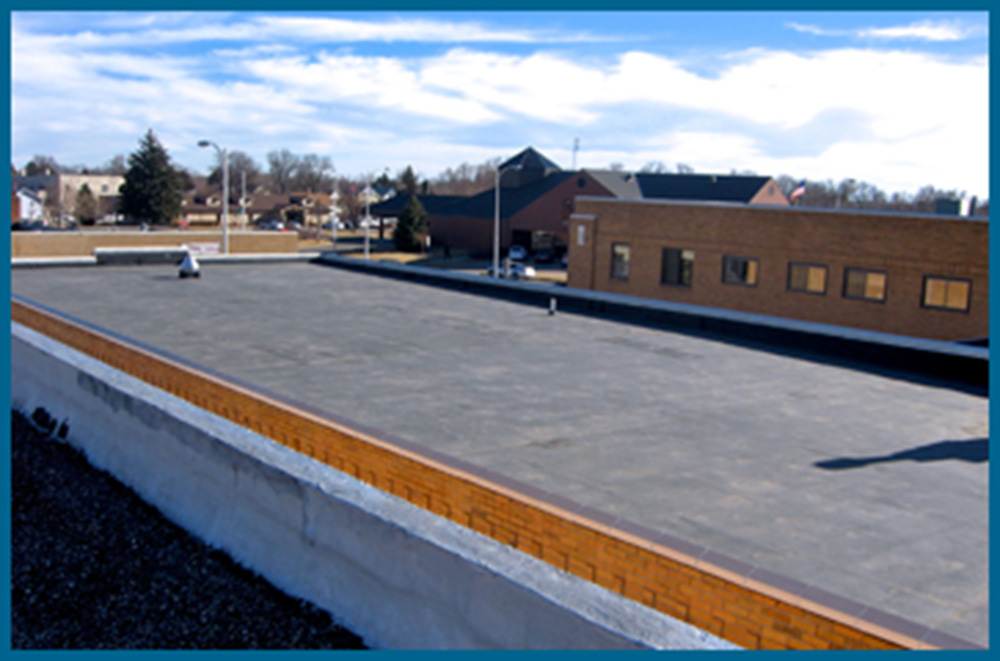
These warranties are invaluable to owners who have numerous roofs to manage or want the peace of mind that their leak issues would be corrected.
There are two rubber roofing manufacturers in the United States: Firestone and Carlisle. Weathercraft has earned the Firestone Master Contractor Award (top 250 contractors in the entire United States) since 1990. Weathercraft is also qualified to install Carlisle roofs. These manufacturers typically reserve the right to install under their names for the best contractors in the country. These manufacturers also sell some of their products to private label companies, which then sell them to less-experienced qualified roofing companies.
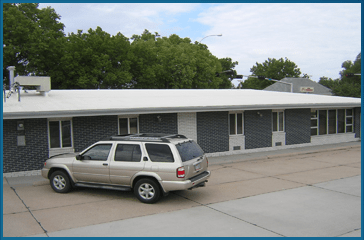
TPO, or Thermoplastic PolyOlefin, roof systems are the fastest growing low-slope roof systems in the United States. Weathercraft has been installing TPO systems since the mid-1990s. What sets TPO roof apart from other commercial roofing systems is the availability of a manufacturer’s labor and material roof warranty. These warranties are unique as they are not pro-rated and cover the labor to repair, unlike all other warranties. What this means is that the manufacturer will pay a contractor to repair your roof at no cost to the building owner if the roof systems fails on its own. These warranties are invaluable to owners who have numerous roofs to manage or want the peace of mind that their leak issues will be corrected.
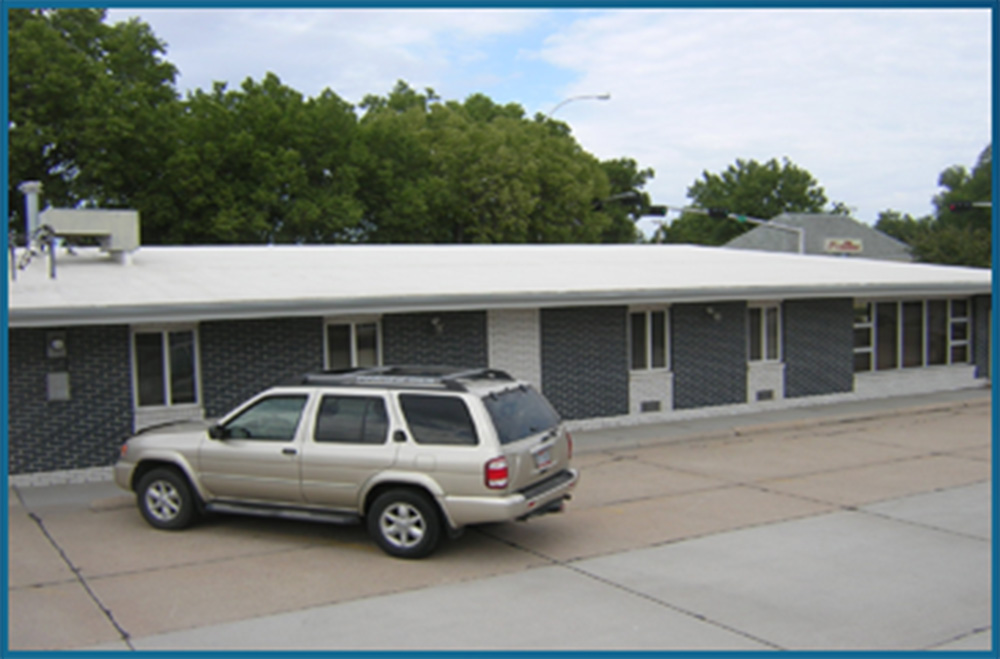
There are numerous TPO manufacturers in the United States that offer manufacturers’ warranties. Firestone, GAF, and Carlisle are three of the largest manufacturers, and Weathercraft is qualified to install all three systems. Weathercraft has been a Firestone Master Contractor (top 250 contractors in the United States) since 1990.
Manufacturers’ warranties are available in 10-year and 15-year systems, with some 20-year systems possible, depending on the roof situation.TPO systems are “heat-welded” at the seams. There are two commonly used attachment methods for TPO systems: mechanically fastened and fully adhered. In mechanically fastened systems, the TPO is “stitched” to the deck over a layer of insulation with screws. A fully adhered TPO system is when the TPO sheet is glued directly to the layer of insulation, which is attached to the deck. Mechanically fastened systems are the more common and cost-effective TPO system, but certain circumstances will require the fully adhered systems.
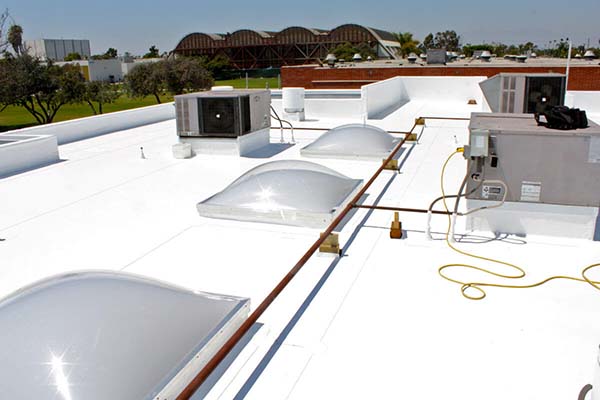
PVC, or Polyvinyl Chloride, roof systems are the original single-ply roof system in the United States. Weathercraft have been installing PVC roof systems since the late 1980s. What sets PVC roofs apart from other commercial roofing systems is the availability of a manufacturer’s labor and material roof warranty. These warranties are unique as they are not pro-rated and cover the labor to repair unlike all other warranties. What this means is that the manufacturer will pay a contractor to repair your roof at no cost to the building owner if the roof system fails on its own. These warranties are invaluable to owners who have numerous roofs to manage or want the peace of mind that their leak issues will be corrected.
There are many different formulations and manufacturing methods when producing PVC roof membranes. They vary dramatically in quality and characteristics.
Sarnafil and Fibertite have numerous PVC membranes that are highly engineered. GAF also produces a PVC membrane. Be wary of thinner PVC roof systems that do not meet typical quality standards and are highly susceptible to Midwestern hail storms. Manufacturer warranties are available in 10-year, 15-year and 20-year systems. There are also some 30-year systems available depending on the product and roof situations.
PVC systems are “heat-welded” at the seams and are typically mechanically fastened. This is where the membrane is “stitched” to the deck over a layer of insulation with screws. One of the advantages of a PVC system is its high resistance to grease and chemicals. It also has a white reflective surface, which can qualify for an “Energy Star” rating, reduces the Urban Heat Index and helps with systems that are under-insulated.
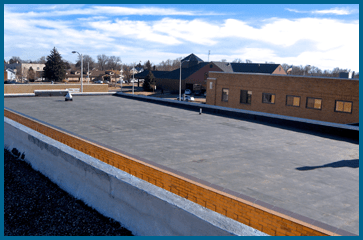
Fully adhered systems have a layer of insulation that is fastened to the roof deck or existing roof with some prep work. This insulation is typically mechanically fastened with screws, but can also be attached with an expandable foam adhesive or, in some situations, hot tar. The rubber sheet is then glued to the insulation and walls using a special bonding adhesive.
One advantage of this system is that it allows for larger rolls of rubber to be used, which creates fewer seams. It also creates a very “clean” roof area that is easy to navigate and locate potential leaks. Thicker rubber sheets also allow for longer manufacturer’s warranty lengths. This is most commonly used in attachment method in Weathercraft’s territory
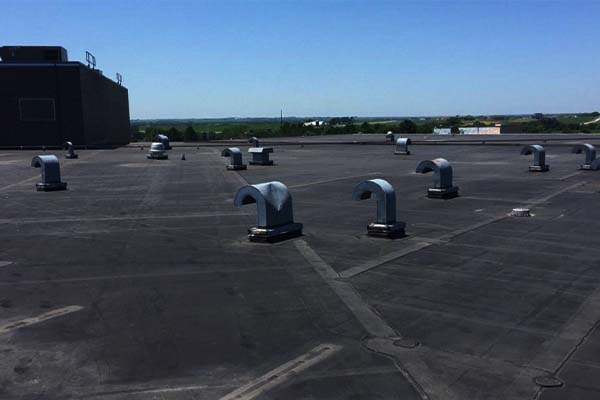
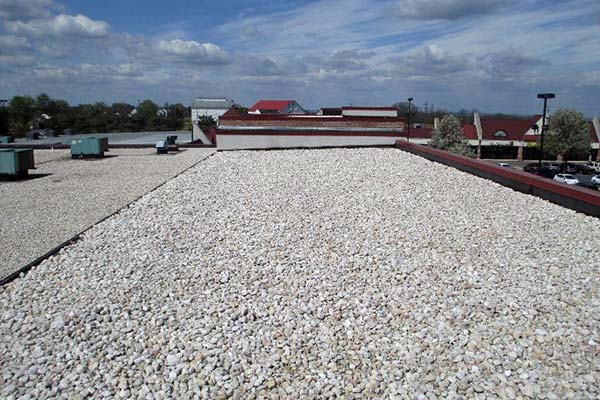
Ballasted systems use 1-inch diameter smooth river rock to “hold down” the rubber sheet over a layer of insulation on roof decks that are capable of supporting the weight of this system. It is typically installed over metal or concrete decks. The insulation is loose laid and the rubber sheet is laid over top with all of the walls and edges glued down.
This type of system is typically the same cost as a fully-adhered system with the initial purchase of the river rock. A large advantage is the low cost of future re-roofs, due to the ability to re-use the insulation and rock. School systems and large government entities are known to use this system so they can fit their roofing needs into a set budget, while keeping their roofs under manufacturers’ warranties.
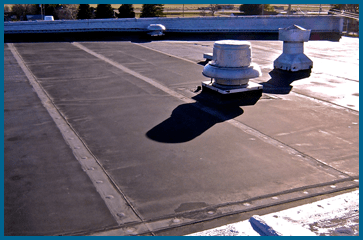
Mechanically fastened systems use screws and plates to “stitch” down the rubber sheet over a later of insulation. These systems are typically used in unique situations rarely seen in Weathercraft territories.

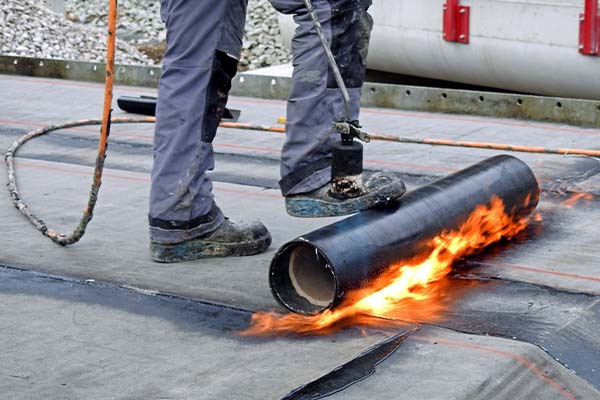
SBS-modified asphalt roofs consist of thick 3-foot-wide sheets of modified bitumen that have been “rubberized” for increased strength and weatherproofing properties. These are typically known as SBS, or Styrene Butadiene Styrene, systems. This product was introduced into the asphalt roofing industry in the 1960s and can be used in tandem with BUR system or as a stand-alone system.
SBS sheets can have a smooth surface or have granules embedded into the surface for additional protection. The smooth SBS can also be aluminum coated for additional protection from UV damage. SBS systems are typically installed by using “hot” asphalt.
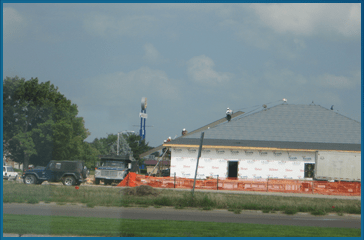
Standing-seam metal panels have a vertical seam that is “seamed” together with some sort of positive force. Sometimes, there is a hand or robotic seamer tool that will roll over the seam after the panels are installed. Sometimes, there is a snap-lock seam that is not reversible. Other situations have a hidden clip that is mechanically fastened within the vertical seam. Standing-seam panels come in a large variety of widths and profiles.
Standing-seam panels are typically ordered to length and are available in numerous colors. The panels have different types of coatings that hold their color. Kynar coating is common on the higher-end panels. These panels also come in different gauges with the smaller the gauge, the thicker the panel. 22- 24- and 26-gauge panels are typical for commercial applications and 26- and 29-gauge are common on residential applications. Underlayments and venting are also important factors on these systems.
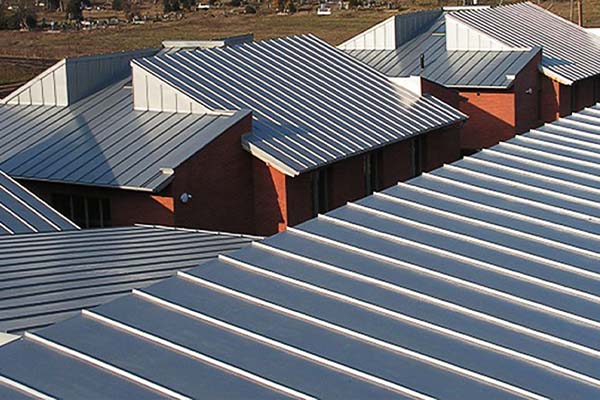
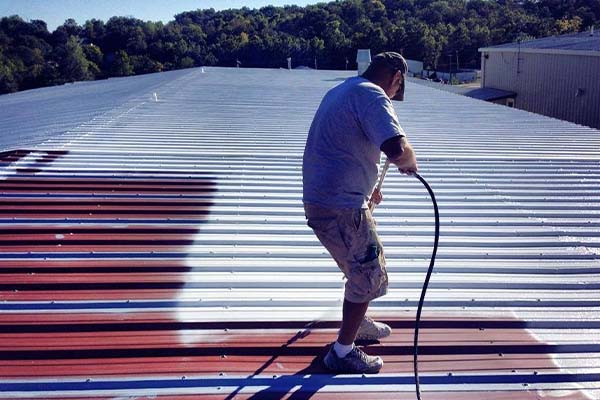
When replacing the metal panels on a metal-roof system is cost-prohibitive, installing a metal-coating system may be the best form of repair. There are numerous coating formulations and systems on the market that are difficult to tell apart as they all look alike (white). There are two reasons to coat a roof system: The first is if the roof is leaking. The second is if the original roof panel coating has been damaged by hail.
If waterproofing is the main goal and the leak is not because of improper installation of the original panel roof, penetrations, or rooftop units, the best systems then are backed with a manufacturer labor and material warranty. These systems usually have a 10-step process that includes power washing, screw replacement, rust inhibitors, seam treatments, prime coat and final coating. These systems are often inspected by the manufacturer for approval.
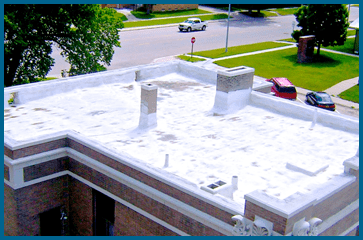
Spray-foam systems are two-part spray-applied polyurethane foam, which is put directly to an existing roof or deck. This spray foam is then waterproofed with a coating. These systems are extremely susceptible to any size of hail and high winds, and dirt commonly found in the Midwest. Spray-foam roofs are expensive to remove and will need to be re-coated often, depending on weather and original thickness of the coating.
Weathercraft does not install spray foam roofs, but is qualified to repair existing roofs if the damage is caught before too much moisture penetrates the system.


